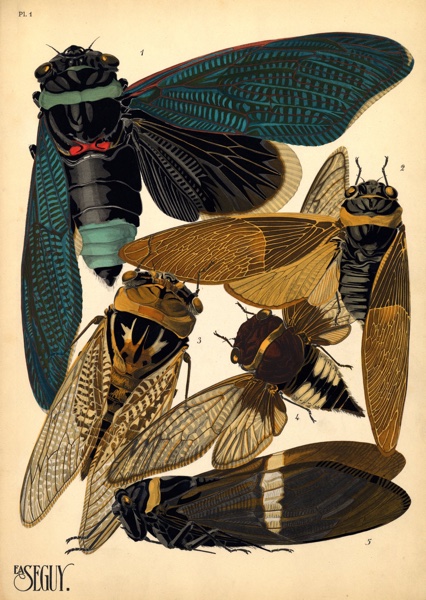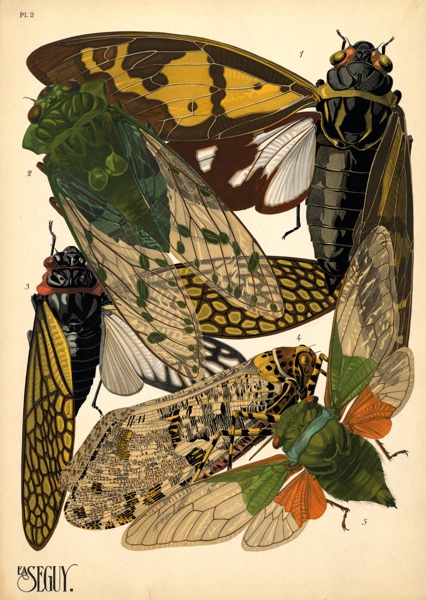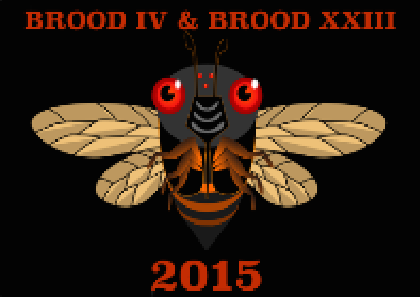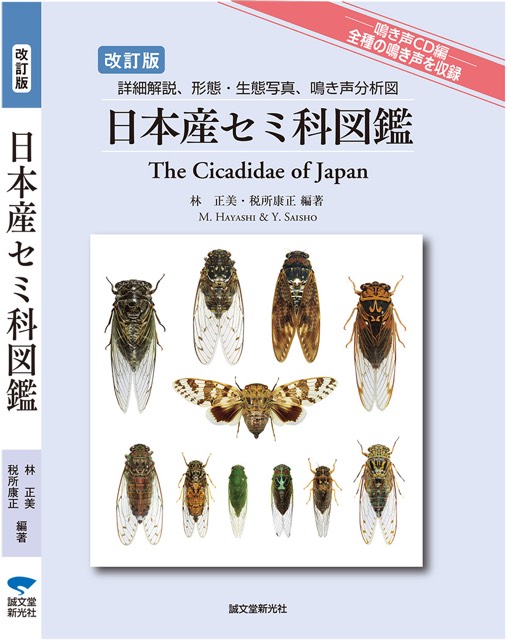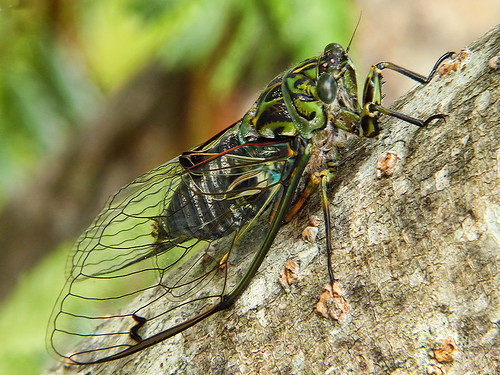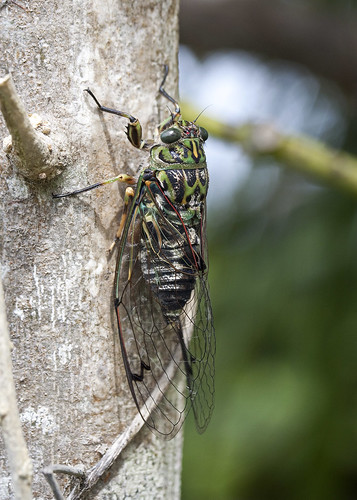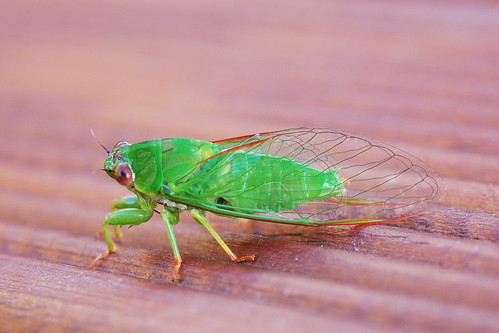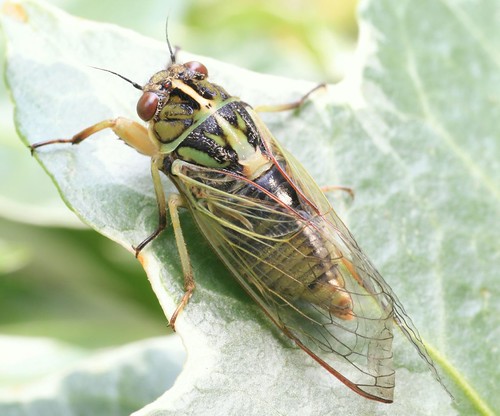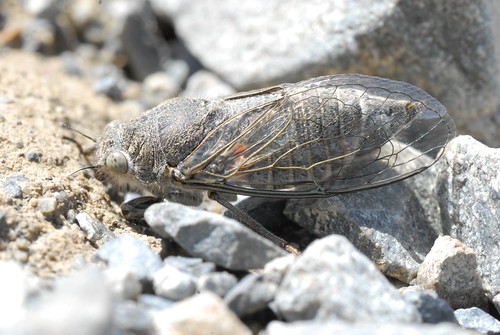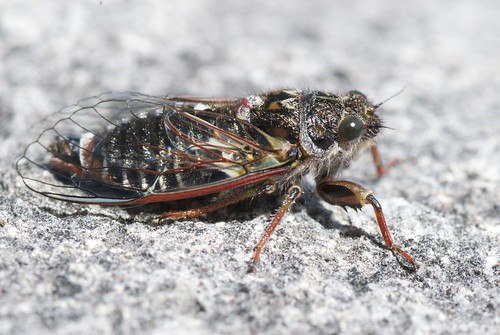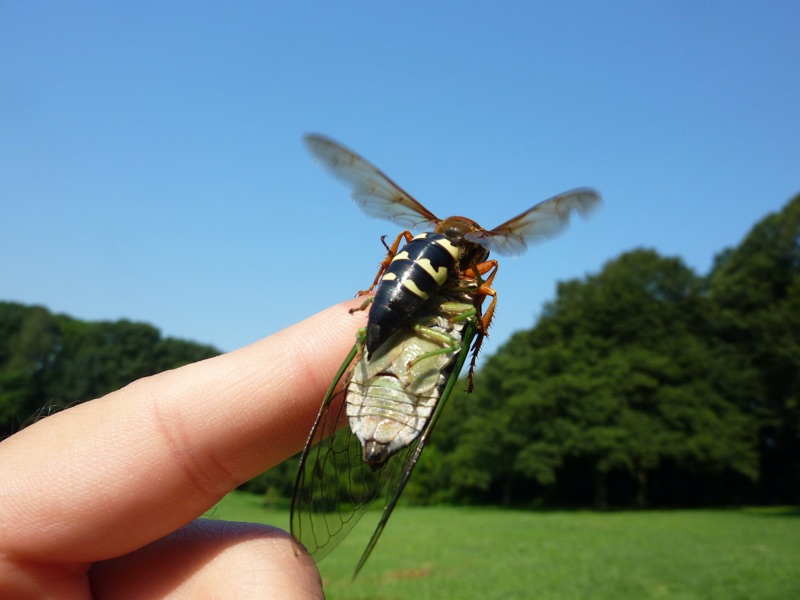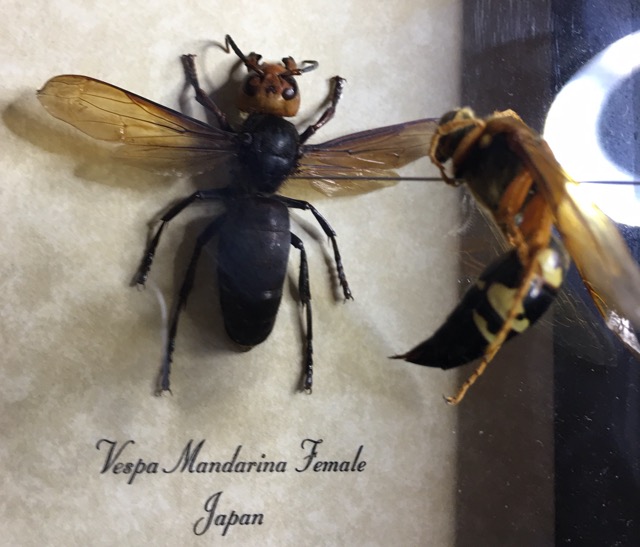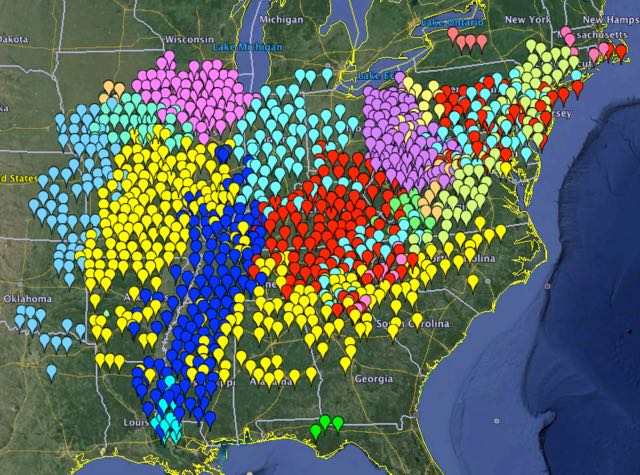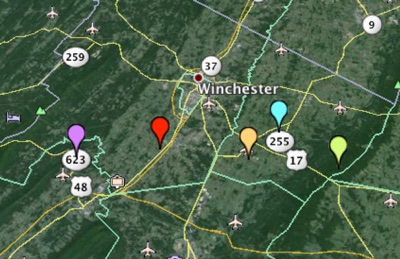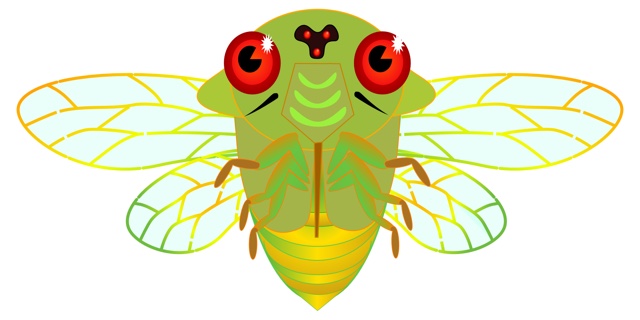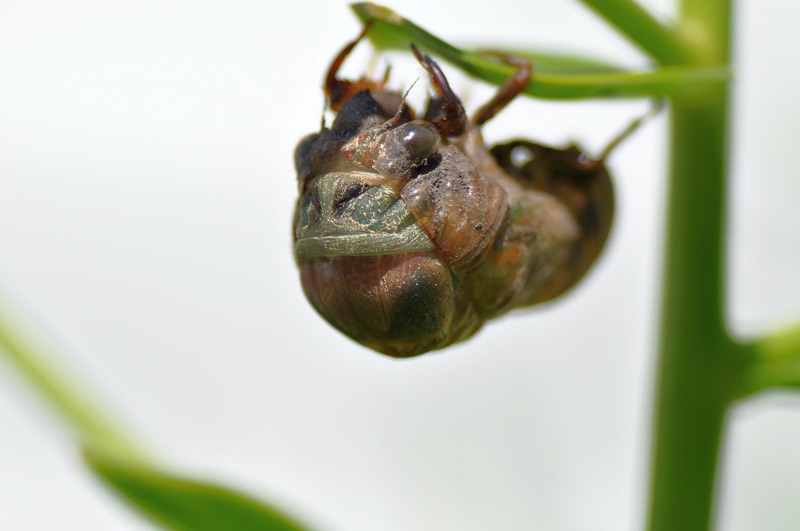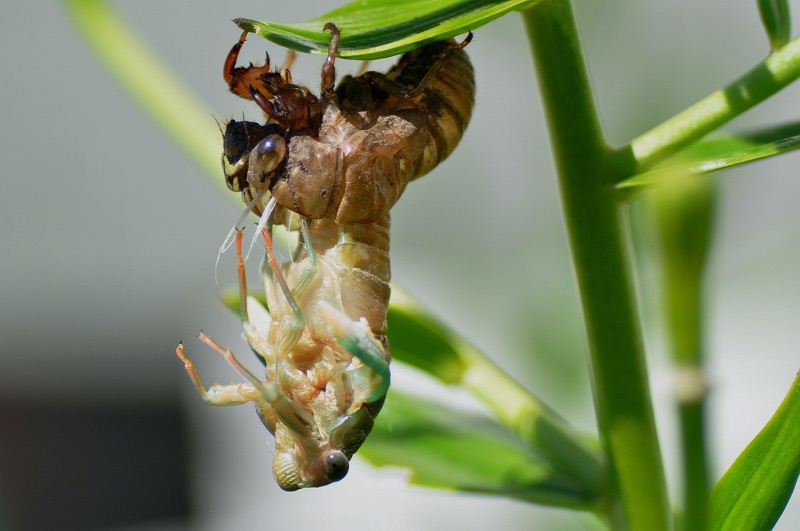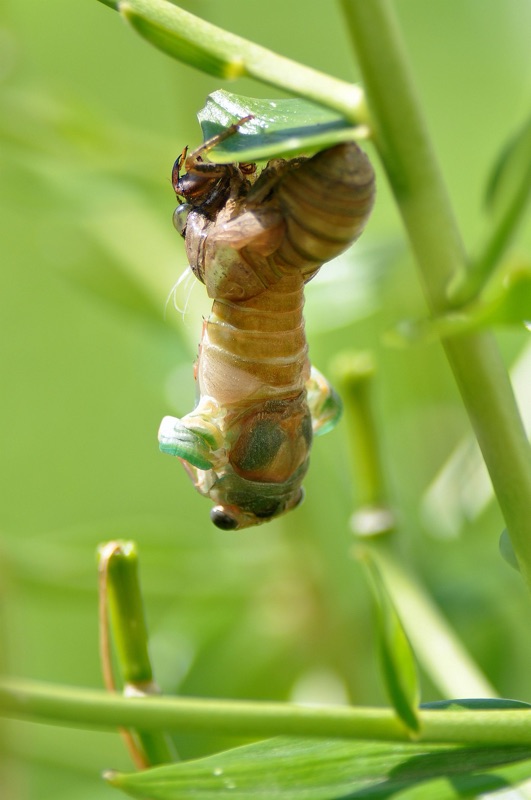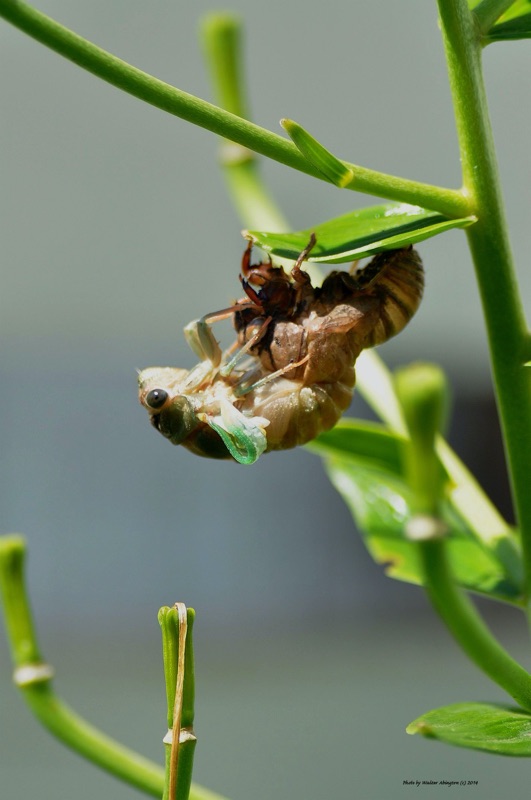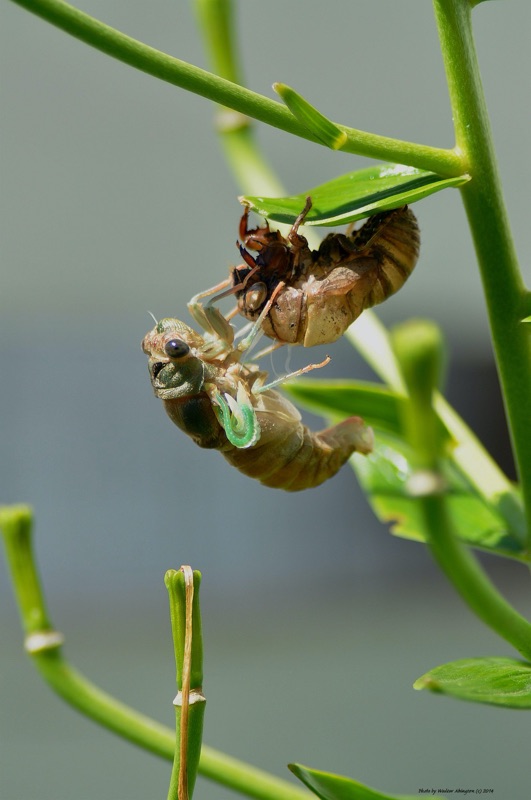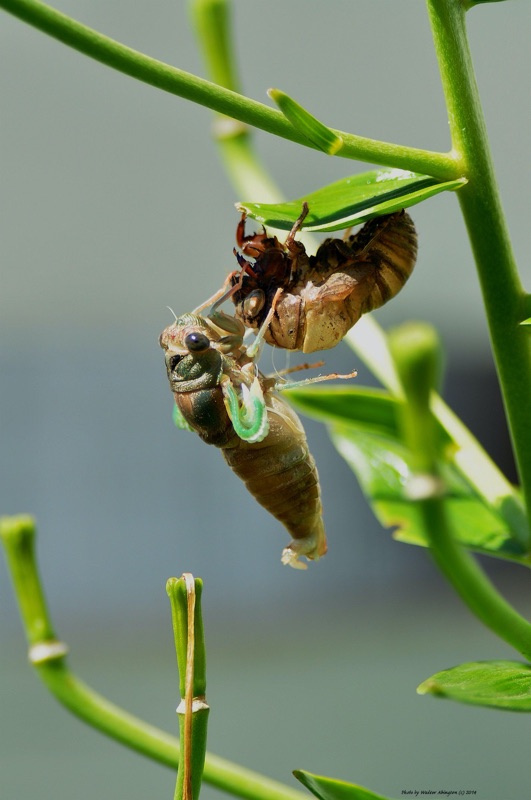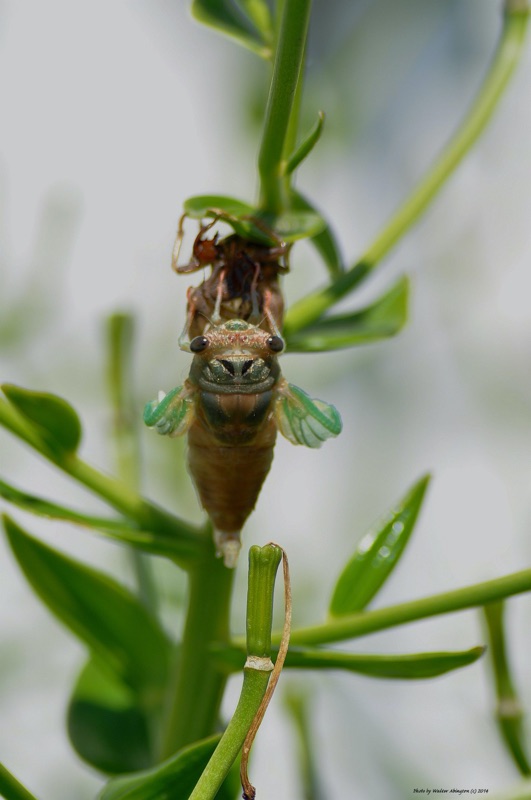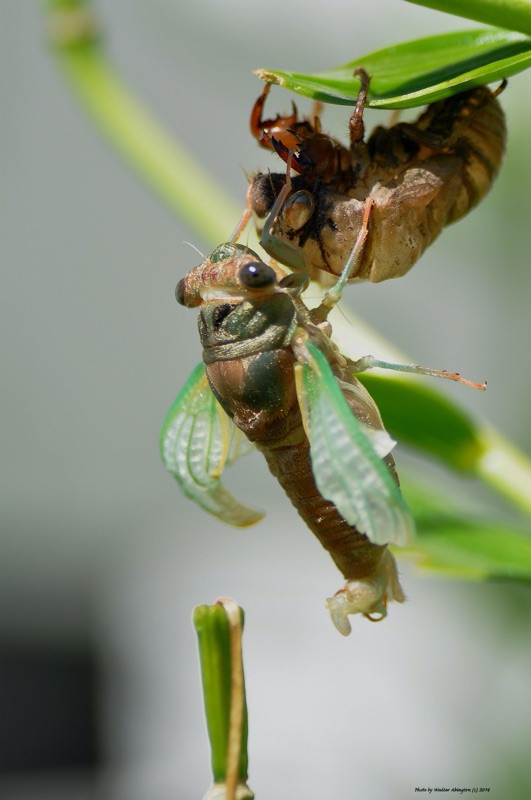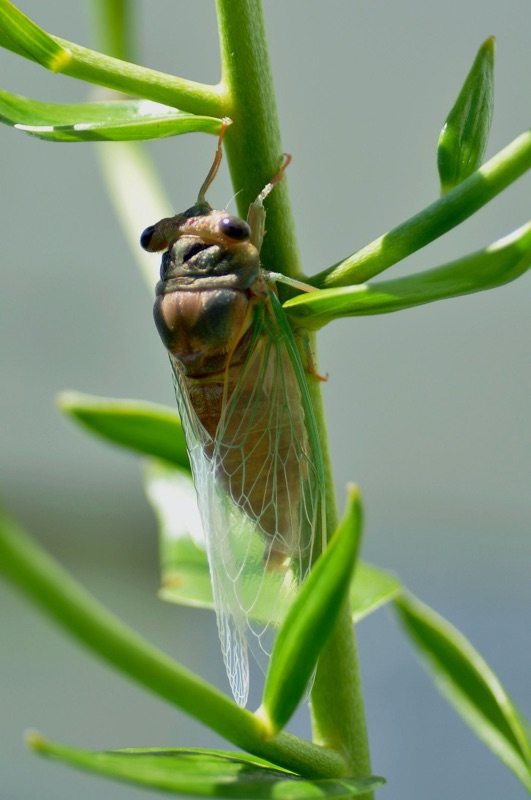Depending on where you live, it might be warm enough for periodical cicadas to start moving around underground, or start digging tunnels to the surface and building cicada “chimneys” above their holes.
What to look for:
1) Animals can hear the cicadas stirring underground, and will try to dig them up and eat them. Look for holes (about the size of a walnut or larger) made by animals digging for cicadas.
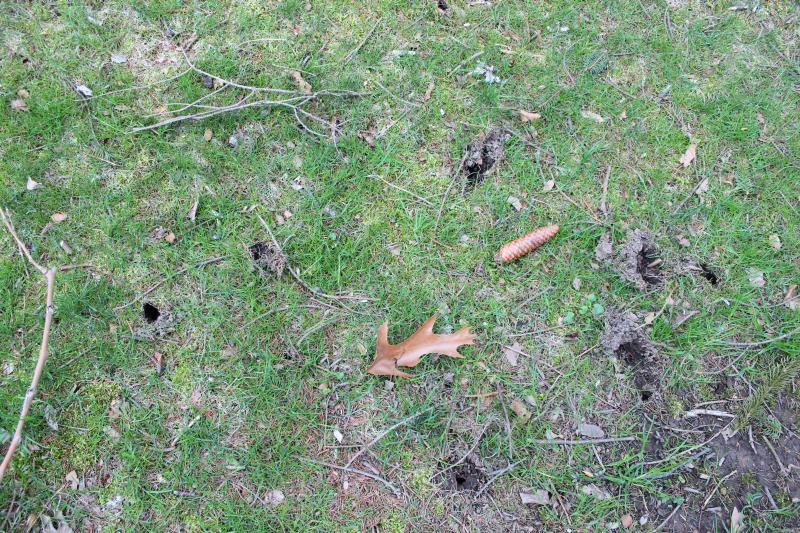
2) Look for cicadas under stones and slates. Some cicadas will burrow their way to the surface, but they hit a large stone or slate and can go no further.
If you find them in this situation, gently put the stone or slate back. They will usually find their way around the obstruction once the time is right.
One clue that a Magicicada nymph is not ready to emerge is its eyes are still white. Their eyes turn red/orange before emerging (a few retain a white/blue color).
3) Cicada holes are about the size of a dime. Cicadas preemptively dig holes to the surface and wait until the weather is nice enough for them to emerge. Sometimes you can see them down in the holes.
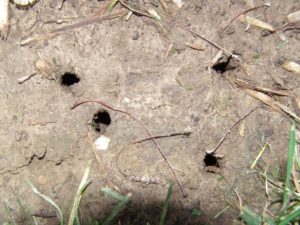
4) Cicadas form chimneys above their holes when the soil is moist or muddy. These chimneys might look like a simple golf ball-sized dome or a structure over six inches tall.
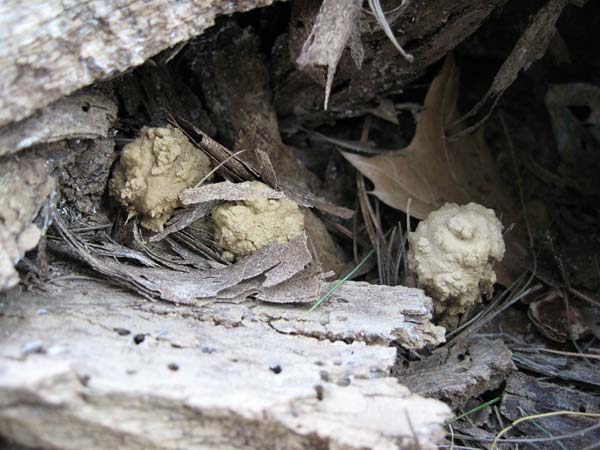
Photo by Roy Troutman.
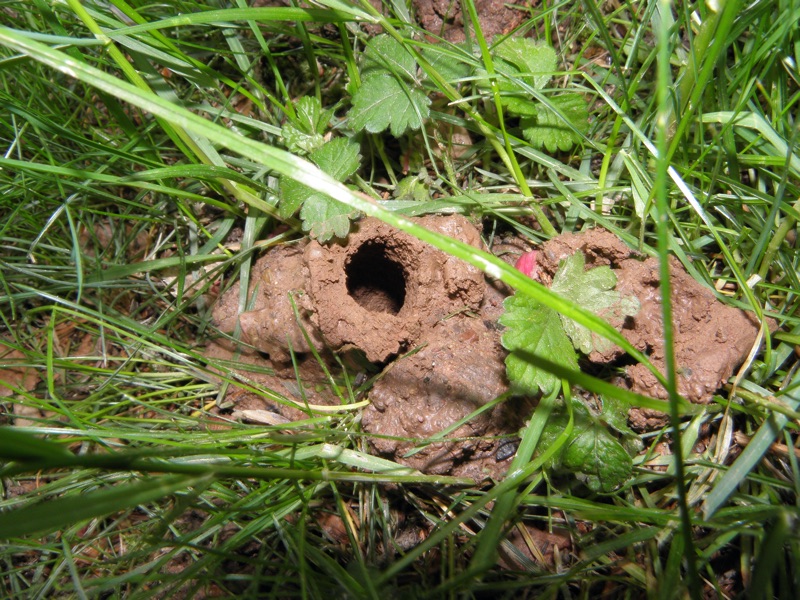
Periodical cicadas typically won’t emerge until their body temperature reaches approximately 65 degrees Fahrenheit (17-19.5 Celsius1). Their bodies are warmed by surrounding soil or warm water from rain. A good rule of thumb is, if the soil 8 inches(20 cm) deep is 65°F, the conditions are good that they might emerge.
And here’s how to tell if a nymph is ready to molt:
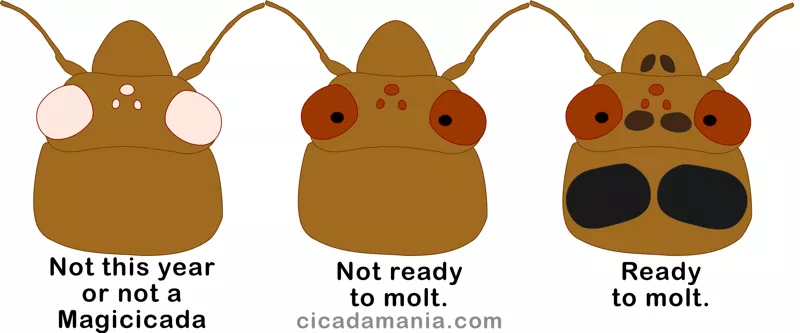
1Heath, J.E. 1968. Thermal synchronization of emergence in periodical “17-year” cicadas (Homoptera. Cicadidae, Magicicada). American Midland Naturalist 80:440—448.
